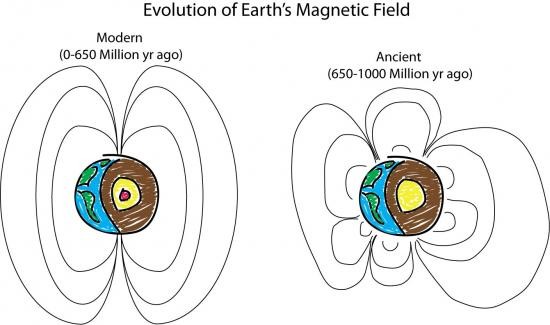Earth consists of two magnetic poles where the planet's magnetic field provides protection from space radiation and harmful cosmic rays from the sun and beyond. In a new study, scientists now suggest that the magnetic field was not always originating from the north and south poles but they consisted of multiple pairs of magnetic poles.
The magnetic field is determined by the movement of molten iron under the planet's upper core, which causes some of it to solidify in the the inner core. During this early evolutionary stage, Earth's core was only beginning to become solid, as scientists are studying how the planet's early magnetic field was before, as ancient rock samples are analyzed that show these magnetic signatures.
Scientists from the Carnegie Institution for Science based their new magnetic field model from the planet's thermal history since studies suggest that this magnetic field emanating from the north and south poles have existed for 4 billion years since the Neoproterozoic Era.
New models also demonstrate that the Earth's core already began to solidify around 650 million years ago. According to Peter Driscoll from the Carnegie Institution for Science, new evidence reveals a surprising amount of variability, as new models do not support a stable dipole field at all time, as opposed to previous beliefs.
Driscoll explains that around 1 billion years ago, the magnetic field transitioned from a dipolar field into several poles and returned back to its original dipolar positions. He adds how these bizarre fluctuations can be observed on the geological record of 600 to 700 million years ago, resulting in more implications of dramatic field changes.
Results of this new study can provide new clues about continental movement theories and massive climate events during Earth's evolutionary history.
This new study is published in the journal, Geophysical Research Letters.



























